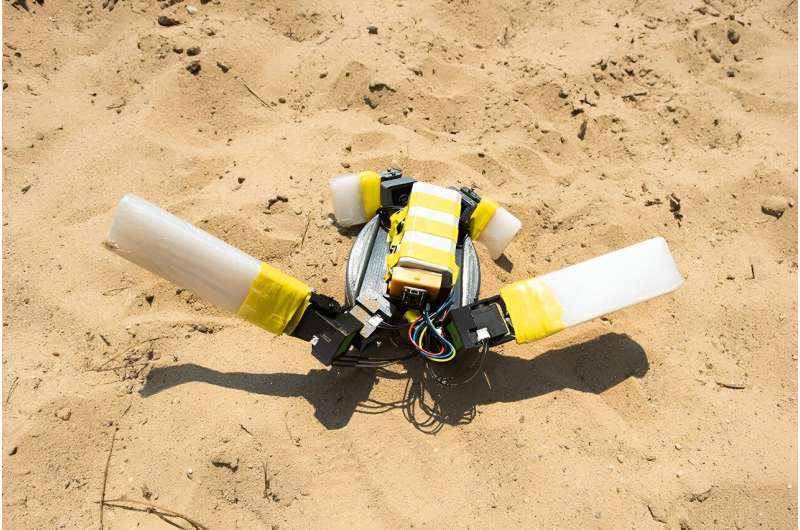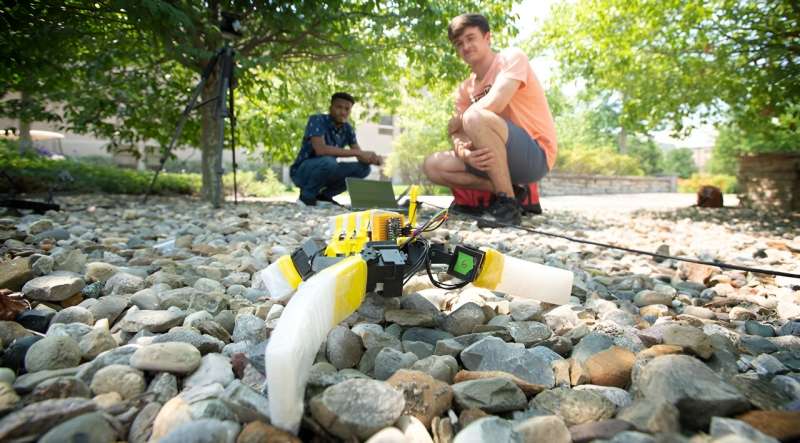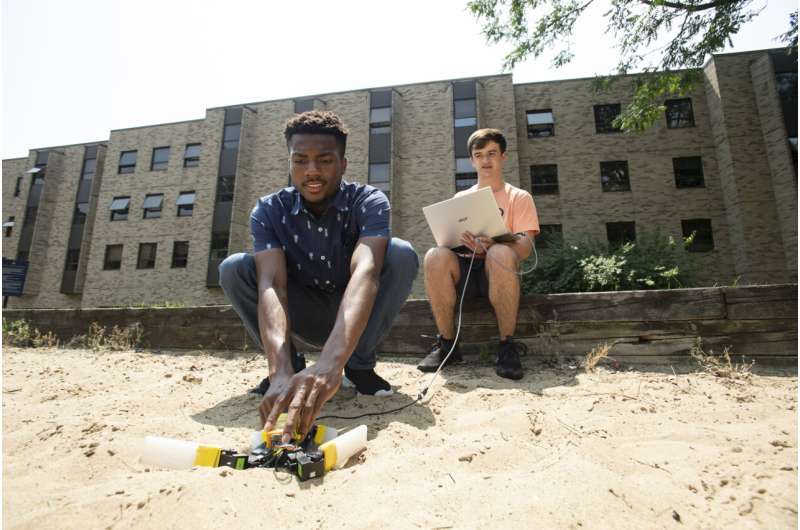This article has been reviewed according to Science X's editorial process and policies. Editors have highlighted the following attributes while ensuring the content's credibility:
fact-checked
trusted source
proofread
Robotic sea turtle mimics uniquely adaptable gait

Sea turtles can glide majestically through ocean waters and maneuver like armored vehicles over rocks and sand on land. Their locomotive adaptability makes them particularly interesting to robotics experts, who seek to learn the secrets of their gait and propulsion.
"The sea turtle's unique body shape, the morphology of their flippers and their varied gait patterns makes them very adaptable," said Yasemin Ozkan-Aydin, assistant professor of electrical engineering at the University of Notre Dame and a roboticist. "Mimicking this adaptability is challenging because it requires an intricate understanding of how morphology, flexibility and gait interact with the environment. Studying how sea turtles adapt their gaits to traverse complex and varied terrains can help us design more versatile robots."
Ozkan-Aydin, electrical engineering doctoral student Nnamdi Chikere and undergraduate John Simon McElroy, a Naughton Fellow from University College Dublin, have designed and built a robotic sea turtle, which they are testing in varied environments on Notre Dame's campus. Their robot mimics a real sea turtle's propulsion: Its front flippers move it forward while its smaller hind flippers allow it to change direction.
The key components of their turtle-robot are an oval-shaped body, four independently radio-controlled flippers, an electronic onboard control unit, a multi-sensor device and a battery. The body frame and flipper connectors are 3D printed using a rigid polymer. The flippers are molded from silicone to provide both flexibility and stiffness.
The robot was designed using data from zoological studies on the morphology, gait patterns and flipper flexibility of multiple sea turtle species. "To maximize adaptability and versatility, we studied the locomotion patterns of different species and incorporated the most effective aspects from each," Ozkan-Aydin said.

Ozkan-Aydin modeled the robot on the size and structure of sea turtle hatchlings. Sea turtle babies are particularly vulnerable—only one in a thousand survive to adulthood. Hatchlings must run a gauntlet of predator sea birds on their journey from nest to ocean, and that journey has become more perilous by a disorienting landscape of beach development and debris.

"Our hope is to use these baby sea turtle robots to safely guide sea turtle hatchlings to the ocean and minimize the risks they face during this critical period," Ozkan-Aydin said.

















